ASICS Eternal Run, the World's First Run Without a Finish Line in the ASICS GlideRide
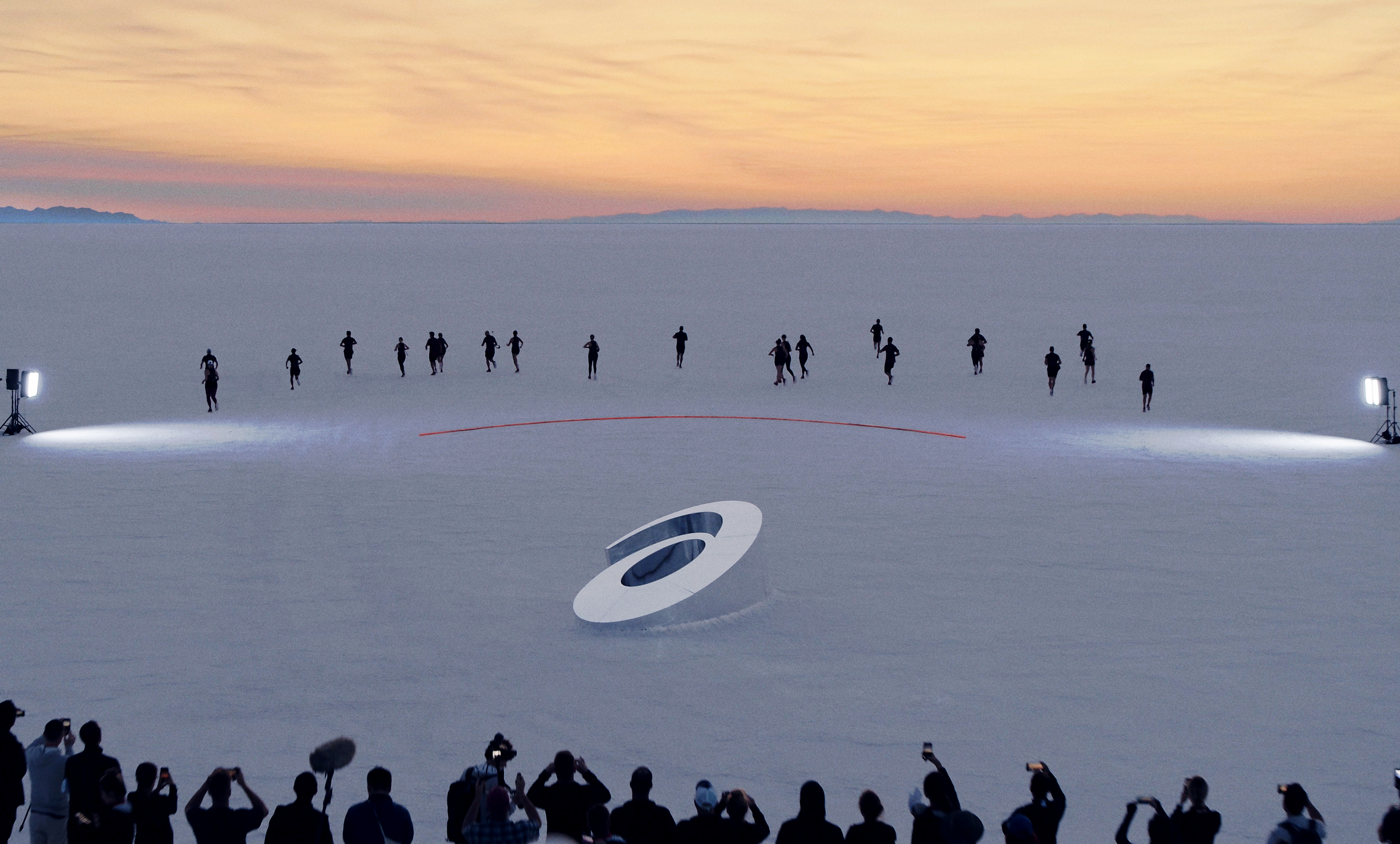
Four members of the Fleet Feet Chicago staff were fortunate enough to be asked by ASICS to attend the Eternal Run, a race without a finish line through the vast Bonneville Salt Flats to launch their upcoming energy-saving ASICS GlideRide shoe. We attempted to cover the 24 hour experience so you can relive it.
Tabetha Wells was our chosen Fleet Feet representative and participated in the Eternal Run, the rest of us were there for moral support and to learn about the latest ASICS innovation.
You’re probably wondering how a race without a finish line works. You’re not the only one. Prior to our flight and two hour bus ride to the location, we weren’t given any information other than the fact Tabetha would be running indefinitely.
This is how the Eternal Run worked:
- Tabetha was given a Garmin Forerunner 245 Music GPS watch two weeks prior to the event.
- She was put through various interval training workouts where the watch measured her perceived effort through VO2 max at easy, moderate, and hard exertion.
- Based on her intervals, the ASICS Institute of Sport Science team calculated an average pace that Tabetha should be able to maintain.
- Based off this pace, they calculated a distance that she should be able to run while maintaining this pace.
- Tabetha was to run as far as she could in the Bonneville Salt Flats while maintaining her calculated pace
- Tabetha’s Garmin watch was stripped from all analytics except for her pace
- Once Tabetha’s pace dipped 10 seconds below her estimated pace three times, she would be disqualified from running any further.
The goal was to prove that the new ASICS GlideRide lived up to its claim: that the energy saving shoe engineered for increased efficiency, to make running further, easier for even more runners.
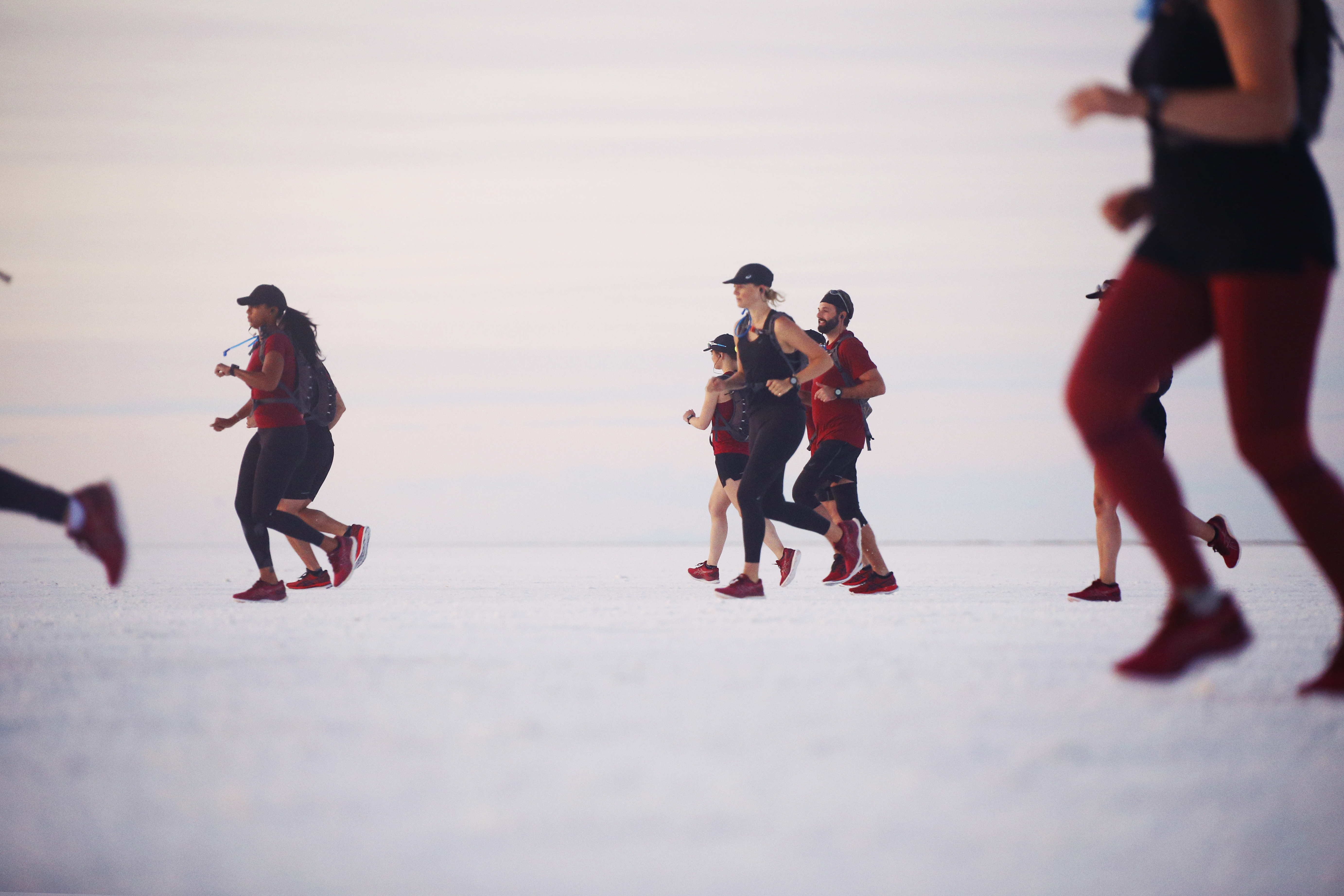

This is how the ASICS Glideride saves energy:
First seen in the ASICS MetaRide, the GlideRide features the innovative GuideSole technology. The GuideSole technology is essentially a curved midsole construction with a stiff forefoot which helps minimize movement in the area where the most energy is expended while running: the ankle joint. A lower degree of ankle flexion means other muscles in the kinetic chain, such as the calf, work less, expending less energy for increased efficiency.
“We abandoned the traditional sole design, which is linear and segmented, in favor of a curved sole with a stiffer forefoot. This would naturally produce a “rocker” effect, smoothly moving the runner forward.” said ASICS footwear designer Hiroaki Nishimura.
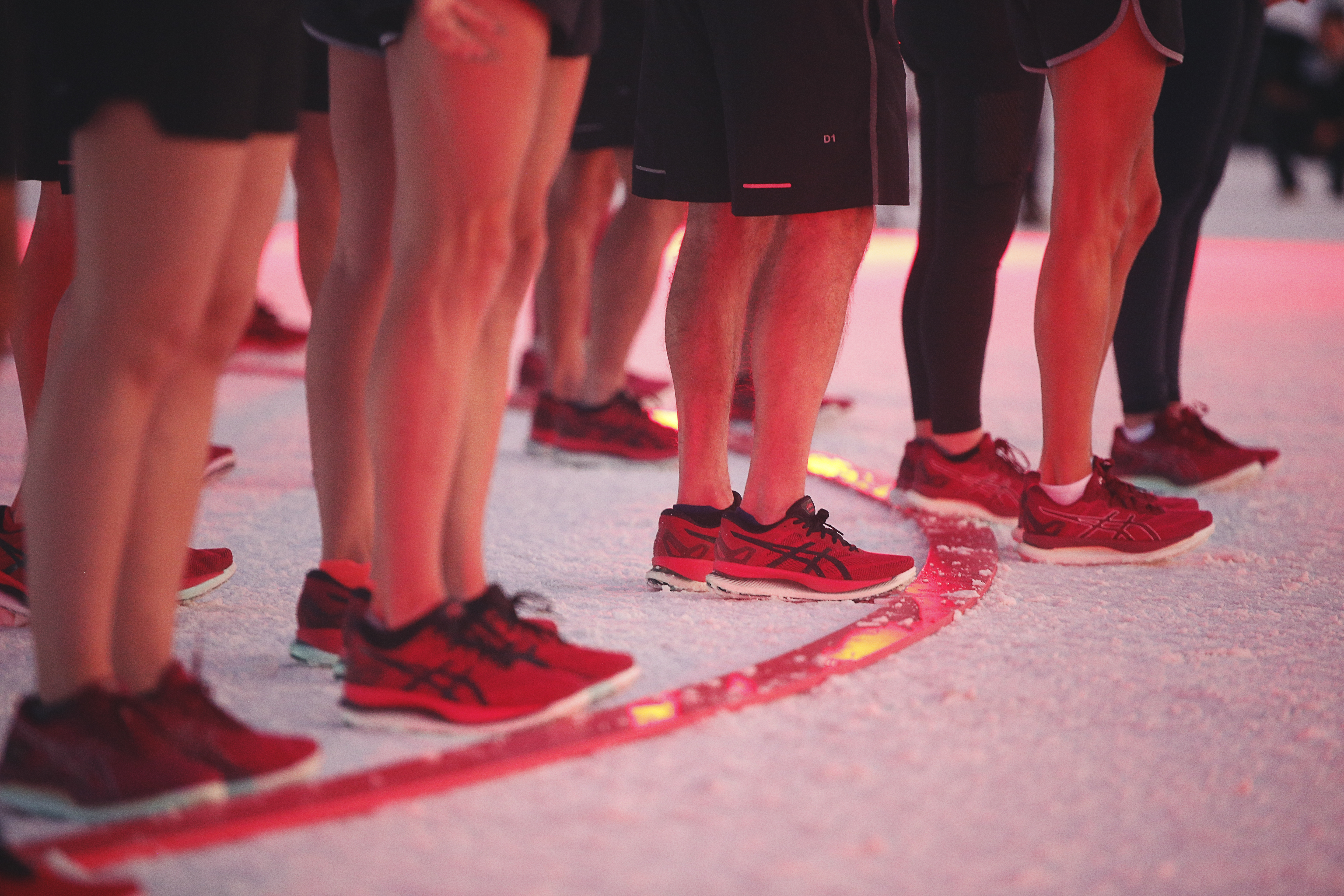
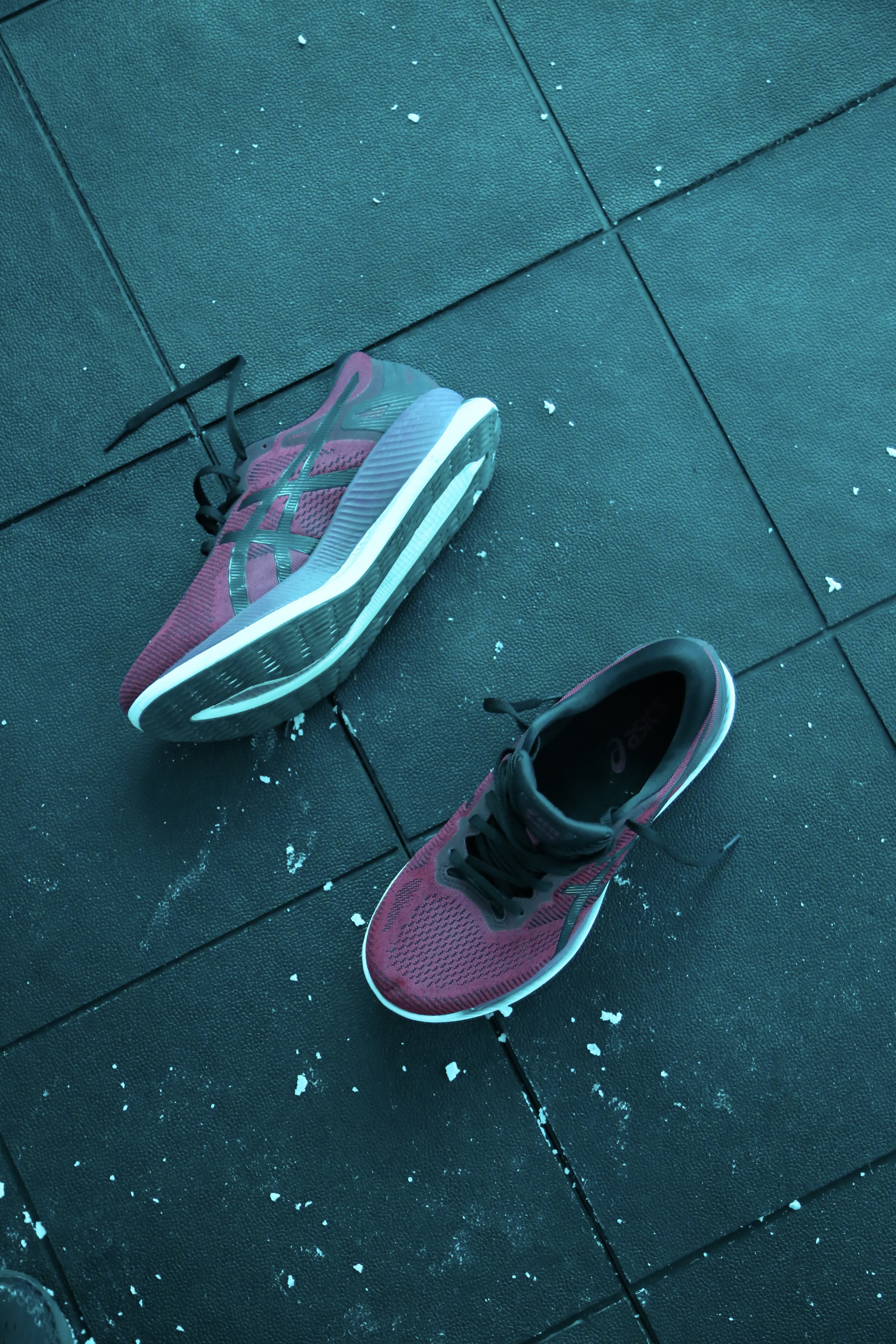
This GuideSole technology is combined with ASICS’ core technologies such as a FlyteFoam midsole which provides responsive and durable cushioning, a GEL rearfoot cushioning system which reduces shock, and an engineered mesh upper which enhances support and breathability.
These characteristics combine to give customers a different experience from what they typically feel in a running shoe. The rolling motion of this shoe actually propels the foot forward, saving the runner energy. It’s something you have to feel to believe.
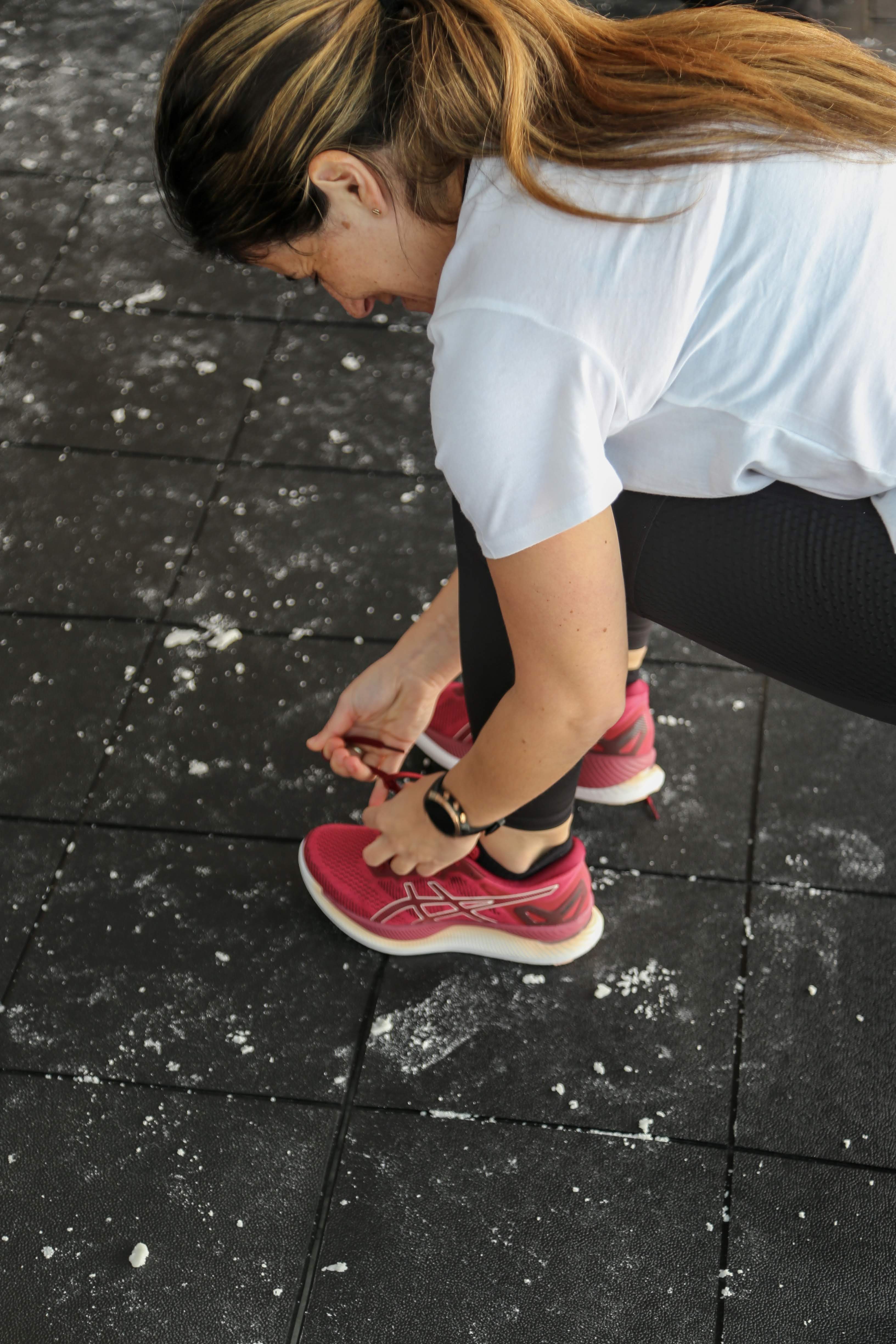
While the above claims have been proven at the ASICS Institute of Sport Science and is being validated at Progressive Sports Technologies—a third-party laboratory in the U.K., we were able to experience them for ourselves at the Eternal Run basecamp.
This is what us spectators learned at the Eternal Run basecamp:
While the runners were out running aimlessly and infinitely through the Bonneville Salt Flats, the spectators were able to go through some tests ourselves to prove the shoe’s claims of increased energy return and efficiency.
A few members of the team went through the Running Analyzer created by the ASICS Institute of Sport Science. This test was done with a treadmill and a running form analyzing app.
The participant first puts on a pair of comparison shoes, in this case, the participant wore the ASICS Nimbus for the first test. They selected a speed on the treadmill and ran for 45 seconds. The app captured a video of the participant in motion while taking measurements of their cadence, stride length, vertical motion, body posture, leg swing, arm swing, and lastly, their ankle joint ankle change. They were then put through the same exact test but wearing the new ASICS GlideRide shoes.
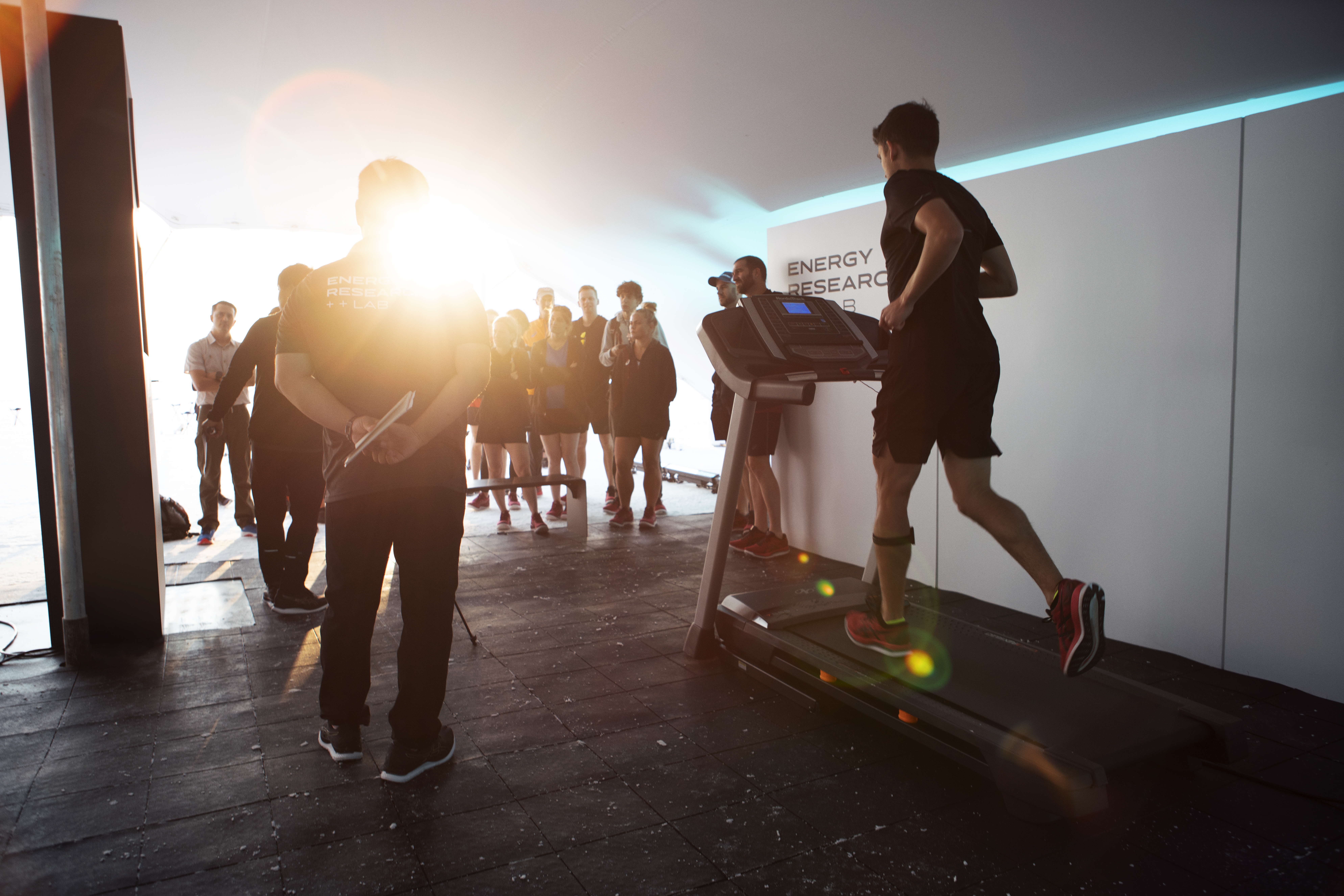
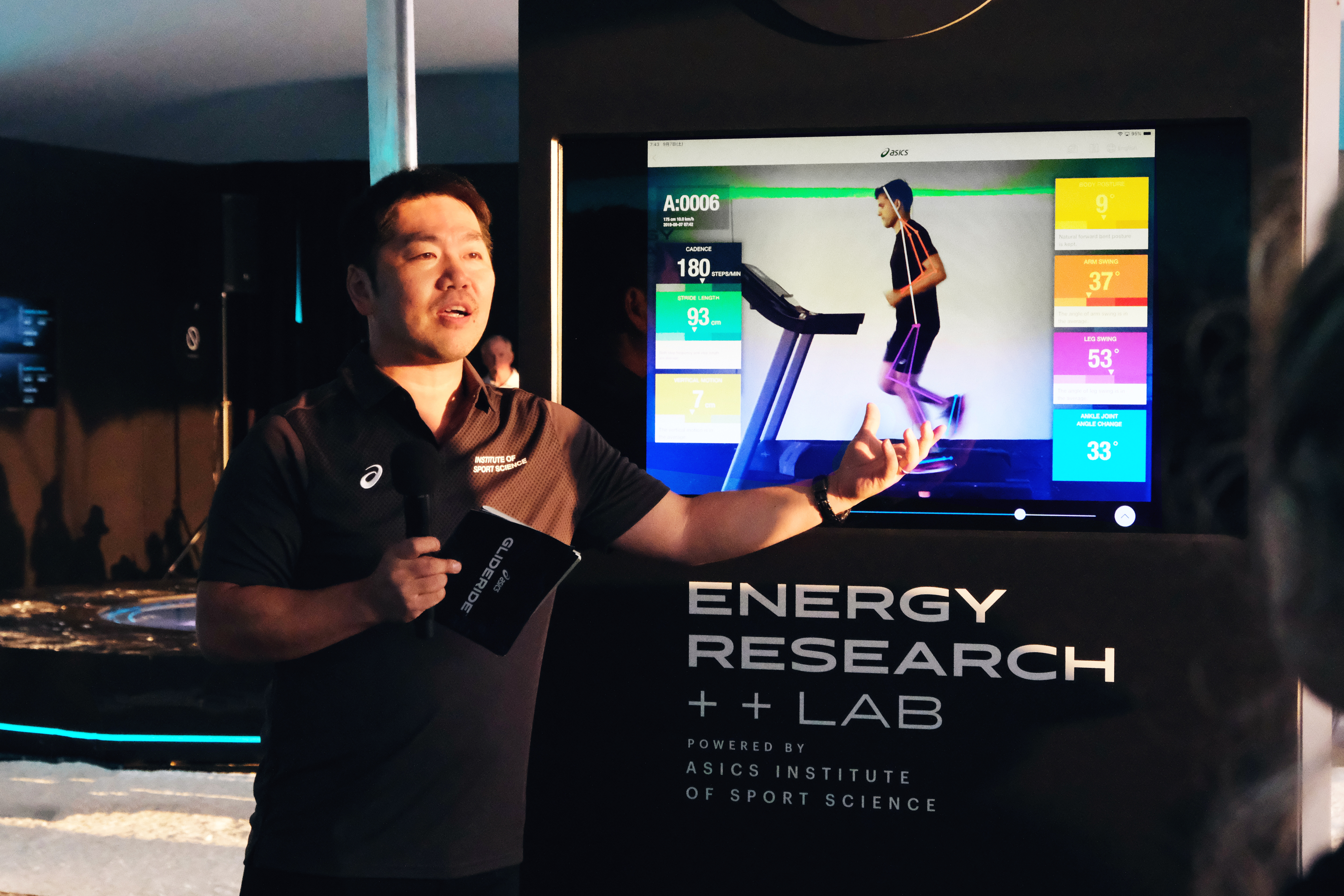
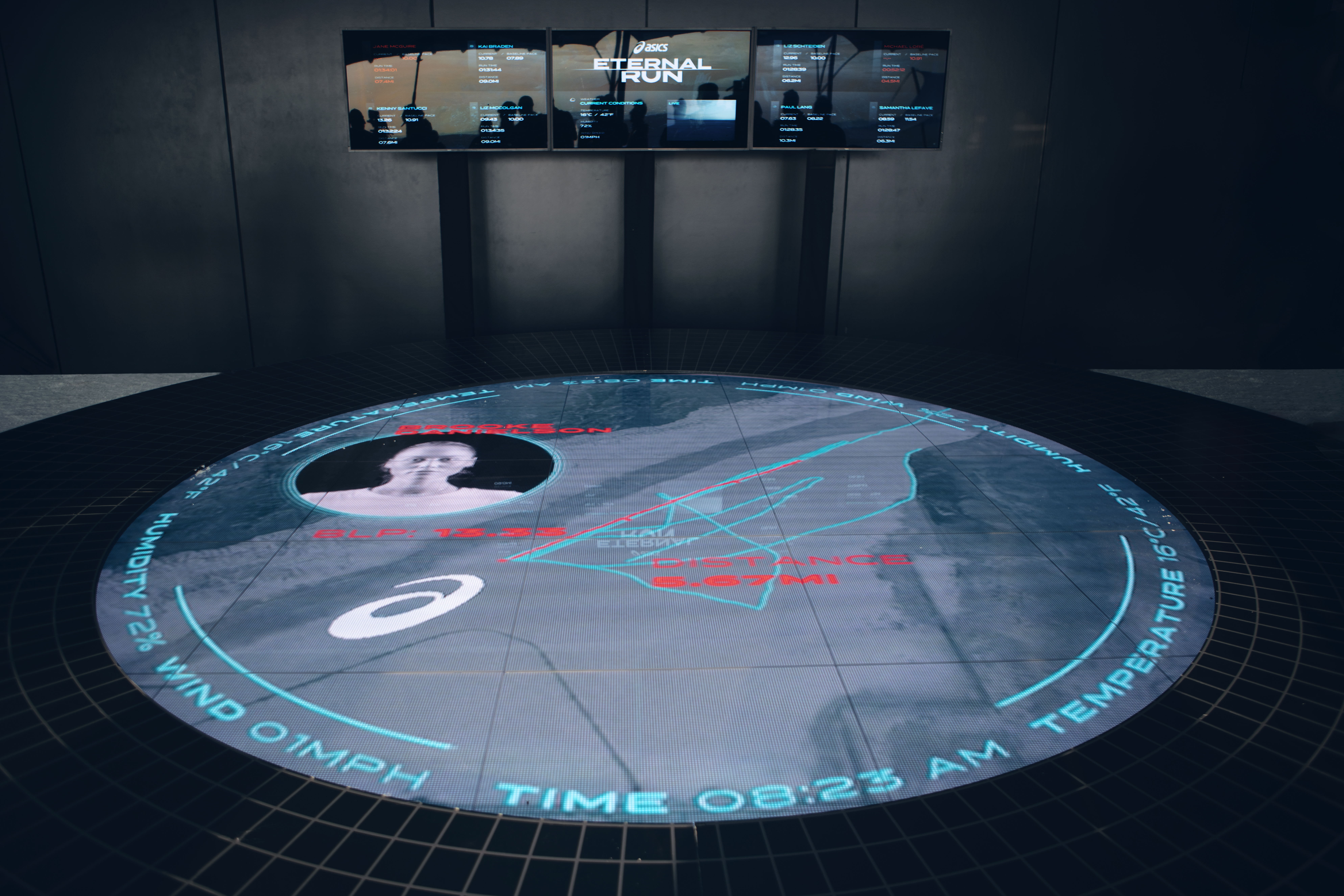
While his cadence, stride length, leg swing, and arm swing stayed the same, his ankle joint ankle change improved from a 44 degree angle in the ASICS Nimbus to a 33 degree angle change in the GlideRide. Minimizing this angle is where runners find their energy return.
Energy return is calculated through two variables. First, the tests the shoes were put through and proven at the ASICS Institute of Sport Science and validated at Progressive Sports Technologies—a third-party laboratory in the U.K., and secondly, by oxygen level. Second, the participant was hooked up with an oxygen level strap on their calf muscle. The more oxygen that is displayed in the muscle, the more energy that is being returned.
While the shoes don't work for everyone, this test proved positive and decreased the participant's ankle joint angle in about 75% of the other tests.
Here’s what the runners learned during their Eternal Run:
Other than Tabetha, 21 runners were chosen for the Eternal Run. They ranged from elite athletes such as Clayton Young to social media influencers such as ex-NFL player Andrew East to running store employees. Each of them had an optimum pace and predicted distance. We reached out to the ASICS Institute of Sport Science team find some data regarding Tabetha's effort during the Eternal Run to see how she faired. Here were the results:
- Optimum Pace (miles per hour): 4.7
- Predicted Distance (miles): 2.4
- Actual Distance (miles): 2.8
- % Difference: 17.0%
View this post on Instagram
Connect With Us
see the latest from Fleet Feet Chicago